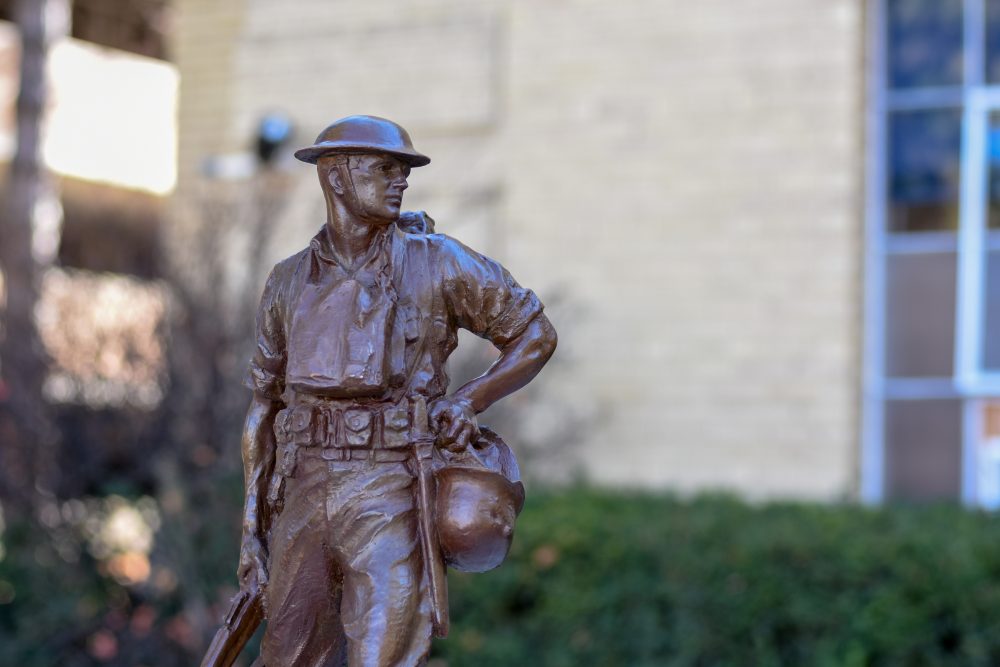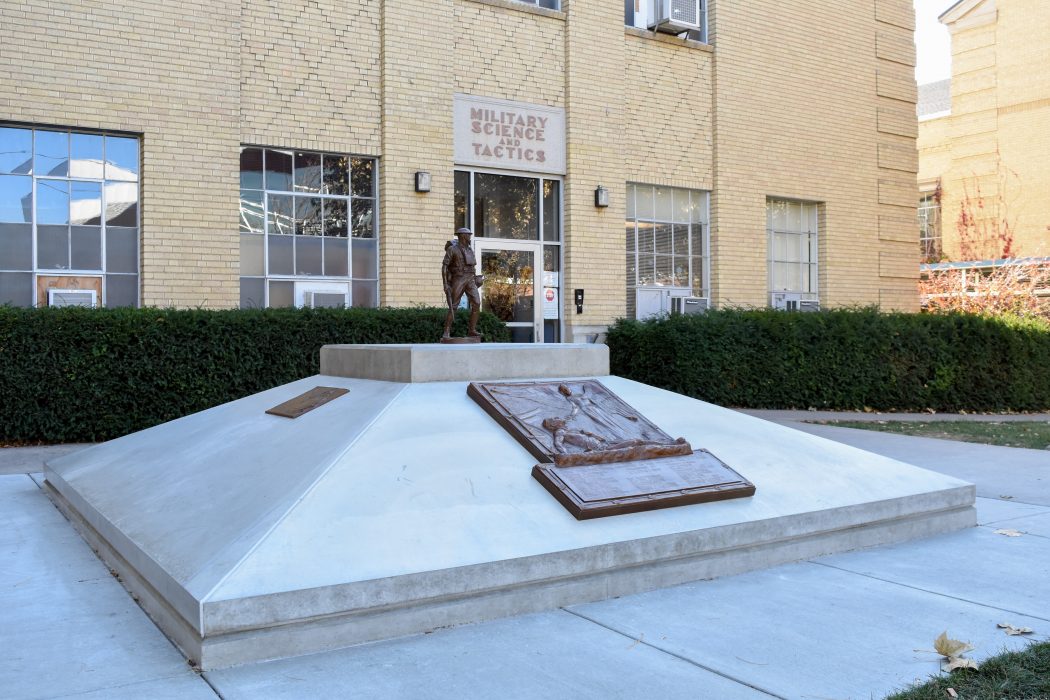100 years of history: USU and the US Military
One hundred years ago, Utah State University was filled with soldiers training on the Quad and Old Main. Other buildings on campus were being used as barracks.
The university’s history is intertwined with the United States military. This history will now be honored with a new war memorial being dedicated in front of the Military Science building.
USU has many sculptures and art pieces around campus. Avard Fairbanks is the sculptor who created the busts of Washington and Lincoln that are currently in front of Old Main. Fairbank’s family contacted the university to see if they would be interested in a donation of a model scale of Fairbank’s “Doughboy of The West.” The answer was a resounding yes.
Katie Lee-Koven, executive director and chief curator of the Nora Eccles Harrison Museum of Art, has helped facilitate the project. The statue will fall under the museum’s care and they will help maintain it for years to come. Lee-Koven has been planning, working with committees and writing grants to make sure that the memorial would be ready in time for the centennial celebration of Armistice day.
“This has been such a rewarding process. The fact that it has all come together is amazing. It has been very humbling to see the response,” Lee-Koven said.
Outside the Military Science building, the ongoing construction has been in preparation for the installation of the memorial.
Jim Huppi, a university landscape architect, and his landscape team redid the irrigation around the memorial and cleaned up the area. Huppi was excited to help design and install the memorial to campus.
“Artwork always enhances our campus. This particular sculpture is a working model of a sculpture that you can find large numbers of in cemeteries around the nation. Our memorial is a modified concrete pyramid, with the sculpture and plaques around it,” Huppi said.
Along with the model-sized statue, bronze plaques will be placed on the memorial. These bronze plaques were once displayed in Old Main before the fire in the 1980s. They have been in storage since that day, but now will be visible to the public once again.
Two of the bronze plaques have been dedicated by classes in memory of fallen soldiers from WWI and WWII. The third plaque is dedicated to the USS Maine that was destroyed in 1888.
Ross Peterson, a retired university history professor, is a expert on Utah State University’s war involvement and history. Peterson has been involved in helping with the history behind the memorial. According to Peterson the term “Doughboy” comes from the way soldiers looked in WWI.
“Doughboy was a nickname for infantry guys in trenches. It was in part because of the helmets and gas masks. All their equipment made them look a lot heavier than they were,” Peterson said.

He further explained the significance of Utah State’s role in WWI. During this time it was the first time that Utahns were drafted into war.
“What happened at Utah State was the president at the time saw this as a opportunity to help the war effort if they allowed training of the troops and basic training to take place at campus. A lot of the students and people from the valley were drafted into the war effort. In those days there weren’t differments. Anybody from 18-45 got called up to go,” Peterson said.
A large number of soldiers were stationed at the university. Although the U.S. was only involved in WWI for a year and a half, Peterson explained that the University’s influence continued after the war too.
“For Utah State as a valley, it was a good time of prosperity. Agriculture prices were high and we were trying to feed a good share of the world,” Peterson said. “I think it was a prosperous time, but then there was the fact of chemical warfare and it was before penicillin. They had a huge flu epidemic, it wasn’t a picnic for anybody. Utah State became more involved and had it’s buildings used as hospitals after that.”
The history behind the new war memorial spans generations, wars and history. It will serve as a reminder of just how important Utah State University was to the military and still is.
“I think anything that depicts a part of our history is important. This relates to us. This is first time in USU’s history that we were thrust onto the national stage. To have students and community involved it was a big part of our history,” Peterson said.
To commemorate this historic installation, there will be a dedication ceremony Nov. 12 at noon in front of the Military Science building. The program will include the USU ROTC, marching band, remarks from Peterson, Lee-Koven and others involved. The ceremony will conclude with a laying of a memorial wreath, a performance of “Taps,” the “21 Gun Salute” and remarks by Lt. Colonel Steven J. Smith, commander USU Air Force ROTC.
“It’s an opportunity for people to come together around something that I think we all value and something that we don’t always have the opportunity to pay tribute to,” Lee-Koven said. “I think it’s especially important for students since previous students have dedicated bronze plaques and the impacts that war can have on all of us whether we are serving or not is something that it is important.”
—shelby.black@aggiemail.usu.edu
@shelbsterblack

